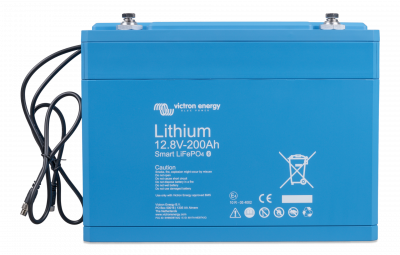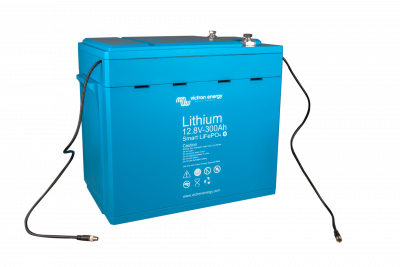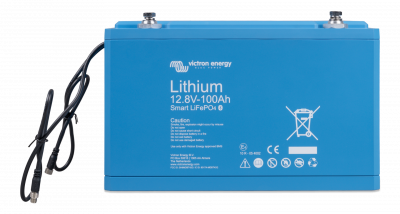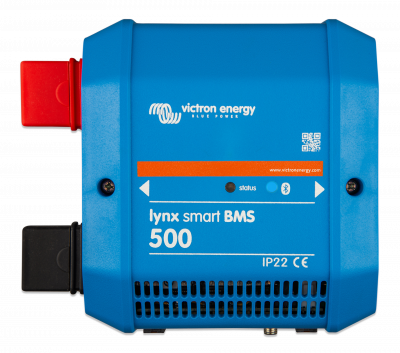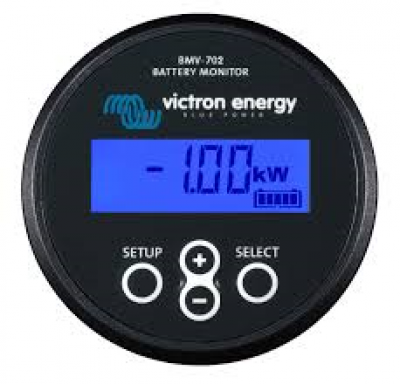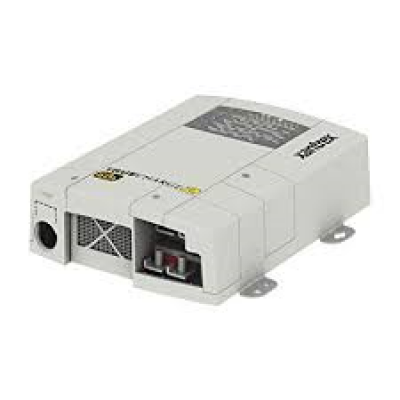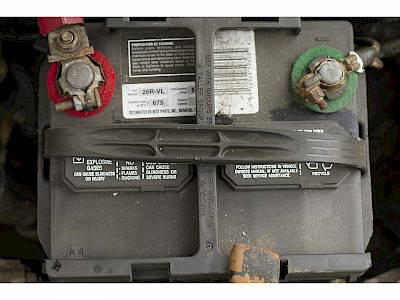How To: Marine Electrical Seminar - Batteries Continued – Episode 2 of 12
Transcript is auto-generated.
[Music] good morning everyone good morning thank you for a Bluewater cruising Association for hosting this event so you got to know what your daily nap our budget is right this number right here and then the next question you've got to ask yourself and this is really essential is when's the next time I'm gonna be recharging my batteries right think about it do you mean are you lucky for example some people have a generator they run the generator in the morning in the evening besides the fact of the noise and the sound and the vibration for them there the amount of time that they need to worry about power is from the last time they run in the evening which is maybe six or seven or eight until they run in the next day in the morning nine o'clock so maybe they're running it every you know they're gonna get our charge every half day some cell borders I even had a power border come to me had about a forty foot boat he says to me says Jeff I don't want to run my generator every I have one but I don't want to run it more than every five days I want to be on the hook on my batteries for five days you know came from a sailing background he's like yeah I've got a power boat but I like quiet and I have a generator but I don't want to run it all the time so we give a battery bank that allowed him to do five times the daily amp hour rate right and this is where the math comes in and there's a method to this whole magic is well your usable battery capacity has to be what your daily amp our budget is times the estimated time between charging think about traveling in the 80s you know before I maybe you didn't have traveler's check you need to carry the cash you're gonna have in your pocket I mean how else are you gonna if you didn't have a credit card you're gone for a week you got any money for a week and so if you're not able to resupply energy in your battery bank and you're gonna say an anchor for two days and your daily is for example 200 amp hours and you're at an anchorage for two days then you need 400 amp hours of usable battery capacity and that's the method to what is perceived to be the madness but it's not madness it's just math question about what the ratio between usable and the batteries you need and this is exactly where we are right here so let's recap what we talked about flooded battery the floor is 50 percent AGM and gel is floor is 30 percent Firefly is 20 the ceiling on all these flooded lead-acid batteries is 85 hence a flooded battery has only 35% usable AGM gel is 55 and Firefly AGM is 65 this is sort of a recap of what we talked about right it's all about energy density and the lúthien would be 80% usable right that's why people do lithium it's crazy amount of energy per footprint and for weight top 15% for batteries is what's called the absorption rate the absorption rate takes forever to recharge back you'll get there but you have to be patient and the problem is if you're under way with an alternator or you're recharging with yeah an alternator or a generator and you're running a charger it's diminishing returns the moment you get around 80 85 percent but let's call 85 it's a really good battery from 85 to 100 might take you 5 X what it took you from 50 to 85 so if time is no factor and you have lots of time how you connected short power overnight you'll get back to 100 but while you're under way I have boat owners they say Jeff is taking forever to recharge my batteries I'm like ok when do you stop when I get to 100 I'm like it's like a marginal tax rate of light 98% at one point you've got to ask yourself is it worthwhile for me to put the same effort I did on the first hour on my fourteenth hour when I'm only getting now 2% of the returns I did on the first hour and then as a boarder you're like well no that's kind of silly why would I do that and hence it's better to run within that bulk rate right where you get the maximum amount of returns and that's a place where you're not taxed once you get to 85% its absorption and that means high tax rate so you're still you you're creating the engine around you're generating all those noises there but your batteries are saying I can't do it I'm full it's sort like having a seven-course dinner your first course you might hungry you might be hungry on the second the third the fourth maybe maybe the fifth but let me tell you at the 6th course you're slowing down like there's no way your first bite on the first course is the same as your sixth course and if you are well you're still growing congratulations right but none of us at one point you're like I can't do it and the seventh course when they take out the cheese's and they put a few little grapes that's flow charging that's you nimbly nibbling on the food at the table and sort of just sort of keeping up with at that point you could sustain that for a period of time but you're just barely taking a bite that's float but 80 to 85 to 100 is absorption and that's a high tax rate I tell boaters all the time I rather you for example have if you have a generator I'd rather you run the generator twice a day for an hour morning and night so you stay in bulk then run it once in the morning for two hours and then get to absorption and then you have diminishing returns we would do this in our normal lives by the way like at one point you're going well it's not worth it like if I've got a 98 percent marginal tax rate you're like why am i working like I'm not getting the returns if I wait another four hours and do it later then I'm gonna get higher returns so you slow down right and you stay within that bulk mode and that's what is you're calculating so that's your usable battery capacities from 1585 3285 and 2285 for flooded AGM or gel or Firefly lithium would be 80% you know what happens if you go below 30% you know with your battery for example for an AGM gel well it's not like 29 is like you're off a cliff but don't get cocky don't start going 20 it's diminishing returns there's a charge curve here's the example summary you take a flooded lead-acid battery for example at 50% depth of discharge you have 300 cycles if you bring your battery down to zero every time which is away a lot of boaters do it to be honest I stop I start charging my batteries when the lights go dim or my fridge stops that's about ten point five volts when you get to that point it's like you know when I decide to go to bed this would be a perfect analogy is when I am actually working and I fall on the ground and pass out that's when I know that it stopped overtime to work and you could do that you could and that doesn't mean you're actually lying no no you're passing up standing like you're falling down passing out and you're like oh yeah that was a good day you know I was feel pretty productive and you're like oh next time let's do it all over again and then you can you imagine that's called a life event okay if you pass out working standing up standing up and you fall down that's what's bringing your battery to ten point five volts is and if you do that your battery is going to give you 50 cycles so it's a ratio of six fifteen and three hundred is six and that's why people have battery beliefs that are so much shorter than others what happens is they unbeknown to them because they don't have a battery monitor they're taking their batteries so hard and the battery's not complaining right it's sort of like my chocolate lab she'd fetch until I say stop she would never stop she's like let's do this it's amazing her hip is torn she's like limping she's like this is great let's keep doing it she would fetch until she dies because she's a lab your battery will do everything you asked of it until it dies but then when it dies also understand there's a cost implication in battery life alright does that make sense yeah question in the back the question is what happens if you keep your batteries below 85% forever and you never charge them you could not do that you can't that that top end battery will be lost you need and that's what happens with cruisers that go offshore at one point you need to find a way to get your batteries back to a hundred percent and the way to do that would be solar for example because solar works in the background quietly and if you don't do that which some cruisers can't they didn't have solar then you end up having to equalize your batteries a lot because of the sulfation and so you read these how-to manuals and people talk about equalization their battery and I'm not gonna go there because that is a full rabbit hole and I will have people running for the doors so we're not gonna do that but you would equalize your batteries once a month to maintain that top end okay another question so the question is what store can you get two hundred-percent yeah if you raise big enough and your array doesn't just meet your loads but it surpasses your loads right like we'll talk about solar but yes solar would be a good way because solar just works in the background it's free you know it doesn't matter it doesn't bother you it's just there you know you use it or not it's there's no noise associated the challenge with an ultra or a generator is it's not pleasant and if it's pleasant to you I envy you because when I hear a generator altura running I don't care if I'm on a power boat or a sailboat it's not the most endearing sound of my life I choose to limit that noise for a certain amount of time and I understand it's a cost of doing business right but at the same time I don't want it to be running in the background forever especially if I have diminishing returns we'll talk about that a little bit later because there's a lot of charging and we'll talk about that so this is sort of a summary chart of AGM Firefly flooded and this gives you sort of all the things that we just talked about are sort of summarized you'll pay more for better don't kid yourself you know if cars are not priced with the least valuable car for the most amount of money or vice versa if you want a better car you're gonna end up paying more for it than if you want it's a choice it's just a choice yeah like for example a flooded group thirty-one battery for example is gonna run you like a Rolls one it's probably gonna be a hundred and seventy five dollars for a deep cycle battery an AGM battery group 31 is about 400 450 and a Firefly is around 700 $750 so ratios the same battery size right you got to compare apples to apples you can't start comparing grapefruits to apples because then your whole world is gonna come completely confusing yeah question do all batteries come in two flavors of either sprint or a marathon either starter or deep cycle flooded batteries do absolutely you can buy a battery of flooded battery as either starter battery a deep cycle battery or a dual purpose battery right sort of like a all-weather tire so there's three flavors for flooded a GM is mostly it's actually really good for both but now they started making AGM batteries are just dedicated for starter for example Northstar has a really good high cranking amp AGM battery and Firefly is only deep cycle people come to me all the time they say Jeff I want a I want the best we're going to do everything Firefly I'm like well everything except the starter because there's no point in buying a firefly a star battery it's not good it's double the price and you don't need it and like but I won the best I'm like yeah I know you want the best but in this case the best for starter is less so we're gonna spend less money on a starter battery because your Firefly battery is just not going to be as good for a starter application it's a deep cycle battery AGM batteries have basically a 50% longer life at the maximum depth of discharge than a flooded battery so you can trade off cycle life versus depth of discharge right Firefly had the biggest depth of discharge bringing them down all to 20% are still four times more than a flooded lead-acid battery but if you do cycle cycle fifty percent fifty percent one of them is 300 and you can either get 3600 cycles or 4700 cycles question the question is there a difference in sizes between an AGM battery and a flooded lead-acid battery and there isn't a group 31 is a group 31 battery so when you buy a battery you're gonna buy it based on the size you're gonna say I want a golf cart a golf cart is a known dimension you can buy a golf cart a GM or golf cart flooded and they're exactly the same physical dimensions so an ad battery for example or a 4 D battery or a group 31 battery all of those batteries actually are known dimensions and that you buy a GM or flooded it doesn't matter it's still the same size so you can retrofit a boat that has four golf carts flooded and you can replace them with four golf cart a GM and they're going to be the same physical size what happens if you replace a flooded or acid battery with an AGM battery do you have to worry about the charger yes you should have a charger that's compatible with AGM a charger that less than about 20 years old is going to have that feature there's gonna be a setting for AGM so yes you would your alternator not so much there one about the same thing 14 4 14 6 now if you only had an alternator and didn't have a charger then yes you would want to have and we'll talk about that an external regulator that would be configurable to AGM I don't want to get to that's starting geeking out it's not storage it's charging we'll talk about charging it a little bit later ok and look how much big your battery bank has to be if you need a 200 amp hours usable you'll need either 600 400 or 300 right and that's why some people say to me I've got sailors racers and they're like for me it's all about weight Jeff all about weight yeah I got this space I don't care about the space because there's nothing in the boat I'm racing to me it doesn't matter but weight matters gave me a battery bang that's gonna do the job with the least amount of weight and so what they'll end up doing is either Firefly a GM for sure because it's a way to get more energy density or I've been on some like crazy race boats like the super all carbon ones and they're doing with you because they're measuring everything in grams like they know every block everything is measured in grams they know everything weighs and so then they'll they'll be very tempted to do lithium because lithium has the highest amount of energy density per weight you can see batteries come all different sizes and you can buy them at all different types of battery chemistry's you can might even buy an 8 d battery and lithium because they're trying to make it easy it's sort of like buying lumber you can buy a 2x4 that's made of fur you can make one that's made of a different material they're just simply saying that's the shape and now you choose what it is made of right so you can buy a for example golf car battery and you can buy it as flooded or AGM or gel you choose right so first you choose the physical dimensions which is an adgroup 31 golf cart then you choose the chemistry and then back to the other question was now should I buy a battery as a starter application deep-cycle or dual purpose I had an unfortunate story with a boat owner about a few years ago he bought a battery and it was labeled as AGM and it was a miraculous battery first of all that battery was purchased at the back of a trunk of a car so that's a first and it came at a screaming deal of a price so are we there you're like wow you're really fortunate the guy sold back of that service or a runaway vehicle depends on how you see it right the battery was half the weight so half the weight is half the battery there's no other way to describe it you're buying led okay so if your battery way half and it's a flooded letter it's a lettuce and battery you got half the battery already there it's like yeah this is an ad that weighs half the weight of normal ladies I'm like no it's not half the weight it's half the battery okay that's already there you don't have the full battery and it was an AGM battery that needed to be topped off so it was a special AGM sense to me that it was a flooded lead-acid battery that was really cheaply done and it was just turn around it's sort of like the snake oil salesman you know going from town to town and you know there's no sort of like refunds because he keeps moving and he's on the next town just selling other deals and so you always got to remember that when you're buying a battery you're buying LED and lad equals capacity and there's no shortcuts every boat builder knows that every single one it doesn't matter who they are they're always hitting the magic note what happens is the boat comes for delivery and then people want more batteries and they just add more batteries but what the Bo respect for guaranteed every single boat that comes out of factory is meeting that requirement 10% charge rate as a function of battery capacity meaning if you have a 400 amp hour deep cycle battery you will have 10% of 400 is 40 amps now if you double that battery bank suddenly the charger isn't miraculously double doesn't change still 40 amps now you doubled the battery bank you have 800 amp hours and you still have a 40 amp battery charger you're gonna see your batteries will die prematurely because you now you only have 5% of a charger II question is what is a reasonable charge rate for batteries and it's going to be between ten and twenty five percent for flooded and for AGM it's ten to forty five five wants a minimum of twenty minimum twenty they can take forty no problem as a charge rate lithium can take three times of capacity you could have a 200 amp hour battery bank and you could put 600 amps into that battery bank so you would charge it if it was completely empty all the way to zero which is not you would charge it in literally twenty minutes that's why people love lithium because they have a very very high charge acceptance rate which is car oh it's big-boy money like you can spend a grin for a battery an ad you know ten grand like we did a boat 8,000 us for an ad versus 400 flooded 20x but the battery is crazy you know energy density life is 5,000 cycles I mean you'll never change that battery people go offshore they're putting in lithium they're gonna be offshore ten years they'll never see that they'll never change those battery banks they'll cycle those batteries every day and how do people do lithium because they also want to wear air-conditioning they've got height like a lithium battery is a pretty miraculous battery it doesn't matter how much you loaded it'll pretty much give you anything you need so like catamarans that want around aircon overnight on battery banks are gonna have lithium battery banks but you got to be willing to stomach the pain at the beginning the cost per unit is gonna hurt there's no doubt about it because the comparison is but it's not over price you're getting something different so you can't really compare right it's yeah you spend way more money but you're doing it for a reason you're not doing it just a flash it's not you're doing it for a purpose but most people don't need that purpose and hence why most people don't buy lithium it's just not required for everyone you want to make sure your batteries are secured from moving the other big thing is the positive and negative cables I'm pretty big about this and I've got ajust a presentation just on batteries also on the website about putting the leza the opposite ends your battery bank should be one location sometimes people have battery banks a different location you try to avoid that as much as possible and if they are in different locations your house battery bank you have for golf carts on one side of the boat and for golf carts on the other then you have to take certain precautions about that battery banks should be in one physical location now you could have multiple battery banks on your boat you could have a thruster bank up front you could have a house battery bank a starter Bank that's fine but if they're part of one bank they need to be in a one location and this point here keep battery connections to a minimum goes back to think about a car battery and think how many connections are in a car battery there's only two there's a positive and a negative everything is distributed right and when you think about electrical the people I was not in the room but you can see what they were thinking they were using the word trunk lines right branch circuits they're thinking about trunk is all the current that's coming out and it goes to a distribution one and then from that point and go through branch circuits right so they're not trying to bring everything back at the battery because it's not modular it's not clean a battery post is not a place where you can have 20 connections right it should go to a distribution point and from a distribution one then it fans out okay examples some batteries this is pretty popular like we basically use these really sort of like I'm a sailor and I'm always thinking capsized and I'm always thinking you're gonna be in a body of water and you're gonna have side seas and you under no circumstances can your battery ever move on your boat never ever I don't care what happens I never like the book could be inverted and my battery banks are gonna stay in place because you can't have that amount of weight sloshing around in a bad seat you're gonna destroy sea-cocks things are gonna get broken it's too much weight it's sort of like having a gorilla or a bull in your engine room if gotta be tied down and so you end up using these sort of like we really beefed it up you'll see here we've got aluminum guard I see cell builders they're putting a wood all around they're like thinking what happens if I get a knockdown you can't have the battery drop down because it's gonna create a hole in the ceiling right you can't have something that weighs 200 300 pounds follow eight feet because of a knockdown it would be end of days the batteries have to stay in place and if ever you see electrolyte on a battery that's a sign of sweating and it's either a sign of aging overcharging or overfilling and it's no it's not moisture and that happens all the time all the time all of that is battery acid and the way you neutralize it is with baking soda this is what happens to a boat owner who's stubborn and doesn't overfill their batteries that's the inside of a vent cap notice how all the plates are actually they shouldn't none of this should be touching this should all be separated that's and also once your battery bank that plate is exposed it's done you're in a you lost you can never expose your battery plates on a battery never black and white you think you can you're gonna top it off and you're gonna hope fingers crossed but it's going to be a journey of disappointment it's just not gonna work out for you and I talked about battery connections at opposite ends so one of the frequently asked questions is can you mix and match different battery chemistry chemistry's now within a bank ever right black and white you can't have two golf carts AGM and two golf carts flooded connected in one battery bank and the challenge is different batteries want different charge profiles so we're going to talk about that later and so you can only charge one setting on your charger you might have three outputs but you're gonna have to make a decision which battery so like having three kids and they all have different dietary requirements and you got to make a compliment you're cooking one meal and that meal is one meal for everyone you can't have three different meals for three kids you're cooking one meal so if you're cooking one meal for three kids which one are you gonna cook right well then I'd say well if you've got five fly or AGM and that was a house battery banking it cost you two grand or three grand or five grand or whatever it is then take care of those ones first and sacrifice the other ones but that's why you want one type of battery chemistry because chargers do not output different profiles on different charger leads right and your alternator if you configure it for a GM it's going to be a GM one output an alternate doesn't say a GM for one bank a gel for another and lithium for another it says one profile and everyone's gonna have again one meal you can't pick and choose and so that's why you can't mix and match battery banks and if you do know that your other battery banks are not getting what they need and they're gonna have a shorter life because you're either going to be under charge or over charged how would you go around there well around the problem of having different battery banks of an AGM and flooded is having different chargers so we'll see some boats well we'll have an inverter charger that is doing an AGM battery bank and then that boat has thruster flooded starter thrust flooded and whatever genset flooded and we'll put an auxilary charger with a flooded charge profile for those batteries and then we'll have the inverter charger beyond AGM but then we also have to worry that there's no combiners that join the charges they have to be completely separate so with that I'm going to open the floor to questions a cycle would be sort of a version of a cycle for us and humans would be for example every time you go to bed and sleep that's a cycle right that would be a cycle so a battery means until how far do you discharge and until you start charging again that's a cycle so if for example you're on a sailboat and you move every day your cycle would maybe let's say you stopped motoring at 4 o'clock and you don't motor again until 2 o'clock in the afternoon and I know your sailboat and you motor but let's be honest certain places in the world don't sail as much as we walk to British Columbia being one of them so you're motoring and so your cycle would be that 22 hour period and then you start recharging some boats that cycle might be three days on the hook power boats - and if you're not running a generator or an alternator that cycle might be a three day cycle and so every time you bring the cycle that's one and how far you go those are the two levers that affect your battery life how deep you go and how often do you do it question what setting would you use on your boy for the first leg better I do either an AGM yeah I would probably end up doing an AGM charge profile because AGM and Firefly are very very similar very very similar what happens when i discharged my battery to zero and zero is ten point five volts it goes further than that but ten point five is the end and that could happen when you lose your power and you've had your refrigerator on or you left your inverter on and you lost shore power and your battery string for whatever reason your batteries went to zero right which is ten point five volts so it's complicated because it's also a function of time so if you brought your batteries down to ten point five volts and you recharged them right away and they were flooded lead-acid you could do that 50 times so you lost only two percent of capacity it's not a big deal right two percent but what happens is most of us don't realize that our batteries went to two point five volts the moment it gets there and we recharge them sometimes they're going to be discharged for a week two weeks three weeks a month two months the longer the time between when they were at zero and the time you recharge the batteries it's gonna affect your battery life so for example if your batteries were left discharged for a month at zero they're done they're finished now I know you have hope I hear it all the time I know I know tell this owners I'm like sure your batteries are fine yeah yeah I know that's what you want to hear let's say that good no problem let's believe you know what there's nothing wrong with though just don't go on your vacation with hope you know just just do the whole thing when it doesn't matter right start going boating maybe at the dock let's hope at the dock right when your partners aren't on board or your teenager or your daughter and if they're not gonna be upset when they lose the battery banks and it's gonna make boating less fun so but find out that discovery you're gonna find that very soon and you don't have to take my word for it just go through the paces and try to pretend this is a day at the dock which is a day at Anchorage and see what your battery voltage does and then you'll probably realize that you're in a world of hurt and it's painful I mean that happens I hear that conversation at least a hundred at least a hundred times a year with boaters at least I get it all the time but yeah it's it's about time think about us as imagine you did an ultramarathon and you couldn't rest you couldn't drink fluids you couldn't eat you had no way to recharge it's a life event if you can't rest after you've done something incredibly hard and you went to the bottom and you're literally you fall down on the ground pass out and they start waking you up and you can't fall asleep and you're so tired that you want to rest your batteries will never recuperate from that they just won't know if it happened and you're there sure you can recuperate but time is of the essence it's like going on the other side if you die you got a window to come back right but if you've dead for a day or a week they're not bringing you back on the other side you're gone and your batteries are gone too yeah question how do you know your batteries are no longer what they used to be and that is you know that vipole tidge so that's a really great question I get that question 200 times a year at least that's a great one and they say to me they say Jeff I have a battery monitor and my battery monitor says my batteries are 80% but my fridge stops working which one is right my fridge like my batteries are dead or my monitors right I'm like no your batteries are dead if your batteries are a 10.5 volts and you're at 80% of capacity you're done you're finished so a voltage is a perfect perfect tool to quantify or qualify if your batteries are still there or not because the two have to line up once your battery capacity effective as a percentage and your volts don't align right if they're completely off of whack and again I'm thinking about my mom and she was you know doing old-school balancing the columns and the rows to see when because you know she was a business owner and seeing if the two rows and the columns the sum of the rows and the columns didn't add up then she knew she did a math there if your if your battery capacity on your battery monitor says you're at 85% or 90% and your batteries are at ten point five volts and your battery monitor was installed properly and it's always been working properly and suddenly it doesn't make sense that difference between those two is an indication that your batteries are dead the question is is there a simple way to know what if you can test a deep-cycle battery and the answer is no absolutely not there is no simple way you can do that with a cranking battery there's two methods you have capacitance testers these little sort of probes you see texts and car mechanics do that there I've seen those so off so off there's no like I bought testers there were a grand two grand it's pfm pure f magic it has nothing to dare on the truth they can be either right or wrong so random the only way to test a deep cycle battery is to do what's called a c20 discharge test again I'm not gonna bore everyone it's on the website I've got pretty detailed instructions it's the only way to know how long you're gonna run a marathon is by running a marathon you can maybe run 10k but you can't sprint to know what your marathon time is gonna be you just can't you just can't now a tester for starter batteries is different they're actually just partying a carbon pile load test err they're putting that on the battery and they're simulating a 600 app load by actually putting a 600 a mode and you see what your voltage is gonna do that works no problem all right that's Carbon pile load test ERG works great but for deep cycle there is no replacement it's a c20 test there is no other way of doing it other questions before break okay no change of operation of the boat and the voltage goes up voltage batteries don't bring voltages up they don't the only thing that would do that is your charger or your alternator generally that's probably well underway and your your charger has failed if it's above 14 for and it could be higher if it's temperature-compensated right it could be higher because battery chargers are some of them are temperature compensated and I've seen battery chargers go to 15 to 15 3 but if you're running your engine and you've got a typical alternator with no external regulator and the voltage is higher than normal then you're gonna cook your batteries and you're gonna kill them very soon very very quickly so a question is how frequently should you bring your batteries pass bring them back to a hundred percent you know if they're staying around 85 and you're cruising for how what frequency I'd say ideally would be every two weeks but some people do it maybe once a month yeah I mean you do what you can right generally under way you're gonna make ground see you know if you're doing a long day you're gonna recharge your batteries and you're gonna plug in at shore power but for people that go completely off grid like they never charge with a charger and they don't have a generator that's their batteries wear down very quickly because they end up self a ting because they don't get that a hundred percent back it's very hard because your alternator would have to run for so long you'd be running that alternator at idle for so long to recharge your battery to a hundred percent that people don't end up doing that and so then they have to end up equalizing the batteries a lot to offset sulfation how do you get 100% with solar well you would get 100% with solar if and this is a big if your solar array outpaces your draws right so if you've got like I did a big lagoon recently we did about two thousand watt array well that owner doesn't have a problem with getting his batteries back two hundred percent right my boat I have a normal boat thirty six foot sailboat I have a 450 watery I don't have problems to get back to hundred percent every single day but the flip side is if you have a tiny array tiny array is a tiny salary you know if you're working a minimum wage and you've got a lot of expenses you're barely gonna meet demand even if you're frugal and so there's an argument for having a large enough array that is gonna offset demands within the sunny period get you back to near 100 and then when darkness comes then you discharge and then you repeat right but you need a larger way to do that array is a large solar array ie a bunch of solar panels connected any other questions before we go for a break and I'm probably gonna have to call break because yeah go ahead you wouldn't need the question is can you equalize with an alternator and you can and only if you have an alternator with an external regulator and that external regulator has an equalization mode but a typical alternator will never give you Equalization equalization is a very high voltage and honestly equalization is going to be a side topic for sure because let's be honest it doesn't apply to most of us it's only very few now even 5% of people will ever equalize not even I don't mind talking about it but this sideline so with that we'll take maybe a 10-minute break and then we'll regroup afterwards all right thank you
Boating Tech Talk
Boating Tech Talk
Boating Tech Talk
Related Content









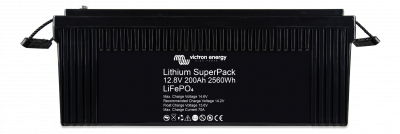
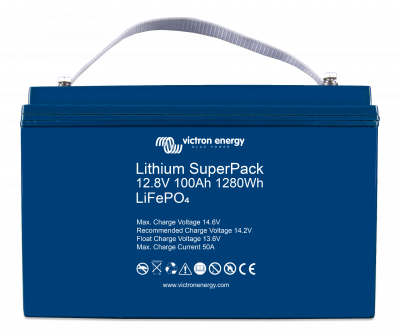
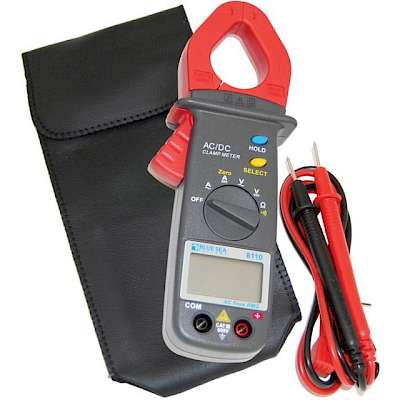
 $258.00
$258.00 $179.90
$179.90